Seventh of 10 parts.
SANFORD — In a junk-filled bedroom on Oxford Street littered with war-movie DVDs and pornographic magazines, the first signs of drug use are the burn marks scarring the top of a dresser. Three workers clearing the house for JMS Cleaning & Hauling soon find a pipe and needle caps under some trash.
Curious, Ryan Sprague and another JMS employee lift up the mattress.
“Ah, here we go,” Sprague says. “Look at this.”
Between the mattress and box spring are dozens of hypodermic needles, evidence of heroin use at this foreclosed property.
JMS Cleaning & Hauling, owned by Sanford City Councilor Fred Smith, does a steady business cleaning the debris out of empty homes, and the job often reveals clues about what could have led to a foreclosure or an eviction.
Lately, those signs increasingly point to heroin.
The epidemic of heroin use in Maine has left few communities untouched. Fatal overdoses are happening at the rate of one a day, from the farming towns of Aroostook County to the fishing villages on Penobscot Bay.
The white two-story house on Oxford Street looks typical from the outside – in a middle-class neighborhood, across from a postcard-pretty wooded lot.
“The thing is, this is a nice neighborhood,” Sprague says, shaking his head.
But with the opioid crisis, it doesn’t matter how pleasant the neighborhood is.
Heroin is here.
In the cellar, they find a scale that could have been used in selling drugs, and plastic containers with hundreds of discarded needles.
They see evidence that children lived at the home – several stuffed animals and toys are among the junk scattered in the living and dining rooms, including a smiling, tie-wearing frog holding a Valentine heart with the phrase “Be Mine.”
“I guess buying drugs is more important than keeping a home for these kids. I don’t get what it’s all about,” Sprague says.
This former textile mill city in southwestern Maine’s York County, with its aging housing stock, limited job market and proximity to the heroin distribution centers of Lowell and Lawrence, Massachusetts, is particularly vulnerable. At least five overdose deaths occurred here in 2016, and many residents not directly touched by those deaths can point to a street or a home where overdoses happened. Some know a friend of a friend who died. For others, it turned out to be a distant relative.
The Portland Press Herald/Maine Sunday Telegram interviewed dozens of Sanford residents, community leaders and others about how the heroin crisis has affected their city, its schools, businesses, nonprofits, the regional health care industry, churches and local government.
As the epidemic spreads, some in the community are working to make more treatment available. Others, however, see too much inertia and a persistent failure to respond.
“It took people standing up and yelling ‘We have a problem!’ before anyone did anything about it,” says Krista Benson, who is in recovery and lives on Brook Street with her two girls, ages 4 and 2.

Residents of Eastside Acres, a public housing complex on Bates Street in Sanford, talk outside a neighbor’s apartment after he allegedly overdosed on heroin in February. Residents called for emergency help twice that day for the same man, who awoke each time before paramedics arrived and refused any medical assistance.
FIRST RESPONDERS ON THE HEROIN EPIDEMIC FRONT LINES
The struggles in Sanford reflect a much broader battle. In one Maine town after another, heroin and other opioids are killing people, devastating the families who are left behind and undermining the neighborhoods, schools and businesses that hold a community together.
If there’s a front line in Sanford’s battle with heroin, it’s at Central Fire Station, just down Main Street from Downtown Center Park and Goodall Memorial Library.

FROM THE EDITOR
COMING SUNDAY: Trapped by heroin: Lobster industry struggles with its deadly secret
There, rescue workers and firefighters confront the human toll of the drug crisis every week.
One weekday afternoon in February, the tones of a 911 call echo through the station.
“Bates Street. Possible heroin overdose. Man unconscious in his car.”
Two firetrucks and an ambulance head to Eastside Acres apartments, a small public housing complex a few blocks from the fire station tucked into a neighborhood of mostly single-family homes in this city of 21,000, where the average household income of $44,040 pales in comparison to the county’s average: $57,919.
Children dismissed from school on a storm day play in the snowbanks as the first responders arrive in their bright-red stab-proof vests. The man who overdosed has regained consciousness and gone into his apartment. He refuses treatment, and Sanford police, who have shown up to help, can’t force him to go to the hospital, even though he’s wobbly on his feet.
Everyone leaves, but about 30 minutes later the man collapses again and Eastside Acres residents make another call to 911. Again, the man awakens before rescue workers arrive and refuses to go to the hospital.
“It’s frustrating,” says Capt. Brian Watkins, referring to the repeated calls for help from the same address, the same people. It happens all the time, he says.
SCHOOLS SEE IMPACT OF PARENTAL DRUG USE ON KIDS
When children are in school, heroin follows them there.
Megan Walsh, the school department’s student resources coordinator, says that over the past three years, the schools have witnessed a substantial increase in families struggling with opioid abuse. From her closet-sized office at Sanford Junior High School, she knows children who have lost a parent to an overdose. Some move constantly as a result of evictions. Others lose their pets to animal welfare officers because their parents no longer care for them.

Penny Christie holds the ashes of her son Adam Kutcher, who died Feb. 26, 2016, of an apparent methadone overdose.
“This is where we have 10-year-olds acting like 40-year-olds because their parents are in such bad shape,” Walsh says.
Penny Christie, a third-grade teacher at Willard School, lost her son, Adam Kutcher, to a methadone overdose in February 2016. She told her students her son had died, but because they are young, she did not specify the cause of death.
“I’m really cautious about what I share with the kids,” Christie says.
She keeps an urn with Adam’s ashes on the piano in her living room in Alfred. And in the year since his death, she has become more open about discussing her loss.
“If adults ask, I tell them the truth,” Christie says.
STARTLING RISE IN THE USE OF NARCAN TO SAVE DRUG USERS
One sign that the heroin crisis is intensifying is the Sanford Fire Department’s ever-increasing use of Narcan – an overdose antidote that can save the lives of people who have stopped breathing. The department used Narcan 22 times in 2014, 41 times in 2015 and 52 times in 2016. This year it’s on pace to double the 2016 number.
Anna Allard, a 25-year-old firefighter, says the toll on families is devastating. She’s seen toddlers in the back seat of a car with parents who have overdosed in the front seats.
“I can’t tell you how many times we’ve showed up for an overdose and the kids are in the next room,” Allard said. “The kids aren’t the center of these families’ lives anymore. The drugs are.”
Benson, the young mother in recovery, sees the evidence daily near her Brook Street neighborhood.
Walking past Roger’s Supa Dolla neighborhood store and Lafayette School, she turns onto Island Avenue, a street that lies at ground zero of Sanford’s heroin epidemic. Several people are milling about in the middle of the street, glassy-eyed, shaking and staggering.
“Hello,” Benson, 26, says coolly to them without stopping. She hung out here until she entered treatment a few months ago.
Now she’s on medication, going to a counselor and attending a 12-step program five nights a week.
“I have a few ‘normie’ friends and that’s it,” Benson says.

Milo Chernin of Sanford, who lost her son Sam, 25, to a heroin overdose in January, reflects on his childhood and young adult life. Her story shows the opioid epidemic is not confined to poor neighborhoods. “Some of these nice neighborhoods, you would never know that there was heroin present,” Chernin said. “But you never know what’s in somebody’s home.”
A PROBLEM THAT TRANSCENDS SOCIOECONOMIC LINES
But heroin hasn’t confined itself to the city’s downtown or its less-affluent neighborhoods.
Milo Chernin knows that firsthand.
She lost her son, Sam, 25, to a heroin overdose in January, three years after her ex-husband, Bill, a beloved and respected family doctor in Sanford, committed suicide.
Chernin says the family tried everything to help Sam, including spending more than $35,000 on a three-month, intensive, abstinence-based residential program in New Hampshire. But less than a month after returning to Maine, he relapsed.
VITAL SIGNS: First responders gave 2,380 doses of Narcan – the drug that reverses an overdose – last year compared to 705 in 2013. Gov. Paul LePage vetoed several bills to expand access to Narcan, prompting Attorney General Janet Mills to use funds under the control of her office to buy Narcan for a number of police departments.
“We left no stone unturned. We could afford to do everything,” says Chernin, 59, whose four-bedroom home on West Elm Street features custom cabinetry, a large fireplace and walls adorned with artwork. “We had the means and it didn’t work,” she says.
“You drive through some of these nice neighborhoods, you would never know that there was heroin present,” Chernin says. “But you never know what’s in somebody’s home. You have no idea how sick and dysfunctional things can get until it’s under your roof.”
Sam was a strapping, 6-foot-2-inch man, good-looking and muscular. He also dealt drugs and was in and out of jail regularly.
Chernin says she always hoped for the best, but the grip of heroin addiction was so strong that she had to steel herself for her son’s death. “One time he told me: ‘Mom, I love heroin,’ ” she says.
Chernin says she started experiencing anxiety and panic attacks last year, and she had to distance herself emotionally from Sam to avoid feeling ill.
“I remember talking to another mom whose son was battling addiction and how the mother said she had emotionally detached herself from her son,” Chernin says. “I remember thinking that sounded so cold. That it sounded like she was giving up on her kid. I didn’t understand until I got to that same place myself a few months later.”
A few months after that, her son was found dead of an overdose in a South Portland motel.

Fred Smith, a Sanford city councilor who runs a salvage business from an old mill building he owns in Sanford, tries to help local men who have struggled with opioid abuse. He is creating three efficiency apartments for recovering addicts, and also hires them to work for his businesses. “I’m a mini-welfare office for these folks, if you want to know the truth,” Smith said.
‘PUBLIC OFFICIALS CAN’T IGNORE IT ANYMORE’
Smith, the city councilor who runs the cleaning and hauling business, is doing what he can to help his community come to grips with its heroin problem. He owns one of Sanford’s hulking old mill buildings on Pioneer Avenue, a remnant of the town’s more prosperous days as a textile manufacturing center.
The Maine economy is growing, but the January unemployment rate in Sanford was 5.5 percent, above the statewide average of 4 percent, according to the Maine Department of Labor.
The mill jobs are long gone, and the buildings near the Mousam River where the workers once labored or lived offer a bountiful supply of cheap rental housing that, indirectly at least, enables the drug problem to fester here. In Sanford, you can see stately, column-adorned, early 20th-century homes next to a manufactured home with an old phone booth in the front yard or falling down multifamily homes.

An ambulance carrying paramedics races down Emery Street in Sanford as they respond to a reported heroin overdose in February. First responders are on the front lines of the opioid epidemic, administering the overdose antidote Narcan with increasing frequency and often responding to repeated calls for help from the same address.
Smith’s 200,000-square-foot behemoth now houses 17 small businesses. He is creating three efficiency apartments that will be used as a place for recovering addicts to stay. Over the past year, he has taken in several recovering addicts who didn’t have a place to live.
He also hires them to work for his businesses in varying capacities.
“I’m a mini-welfare office for these folks, if you want to know the truth,” says Smith, wearing a faded red Sanford Spartans sweatshirt.
He believes employment helps people in recovery overcome their addictions. For those who are in early recovery, Smith will sometimes forgo paychecks and pay their rent and other living costs himself. That way, there are no means to buy drugs.
Smith is also working with Calvary Baptist Church on a grass-roots effort that will start later this spring to run a faith-based counseling program. Several other efforts are underway to expand drug treatment and other recovery services in Sanford.
Grace Street Services, which operates medication-assisted treatment programs in several Maine communities, recently opened a treatment center in the Sanford Industrial Park. The treatment center will offer Suboxone, Vivitrol and methadone maintenance in the former location of Spectrum Health Systems, which closed its treatment program in 2015 after the state cut methadone reimbursement levels for MaineCare recipients.
Churches are also getting involved, including St. George’s Episcopal Church, which hosted a community Narcan training workshop in February in cooperation with Sanford police and other partners.
Sanford’s medical community is also stepping up with initiatives that will start in the summer or fall, including medication-assisted treatment programs at the low-income health clinic, Nasson Health Care, and similar services through Maine Behavioral Healthcare.
NEVERENDING DRUG SUPPLY, NOT ENOUGH TREATMENT OPTIONS
At the police station a block from Goodall Park, the historic baseball field where Babe Ruth once played, Chief Tom Connolly says he gets impatient with the slow pace of addressing the opioid crisis. The community was shaken into action last summer when six overdoses occurred in one day, including several at the Cranberry Ridge apartment complex off Lebanon Street, Connolly said. In February, police made a major heroin bust with a Sanford connection, but firefighters said that based on numerous overdose calls since then, the drug supply has already been replaced.
Connolly, who two years ago wrote a 35-page booklet about heroin that has been distributed to local schools and doctors’ offices, says enforcement is important, but it’s much more effective to reduce demand with treatment and prevention.
“The epidemic has gotten so out of control, public officials can’t ignore it anymore,” he says. The state has awarded Sanford police a $200,000 grant for medication-assisted treatment, which Connolly regards as a good start.
“There’s more (treatment) going on than there used to be, but it still isn’t enough,” he says. “It’s not nearly enough.”
Copy the Story LinkSend questions/comments to the editors.






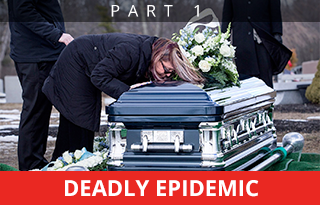
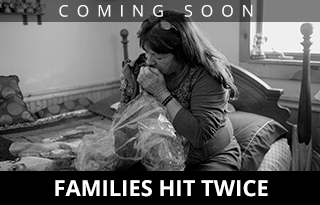
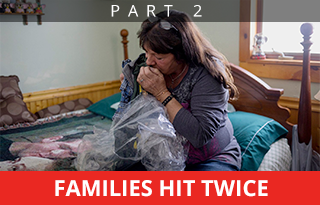

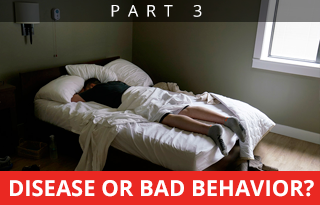
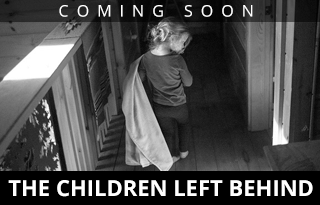
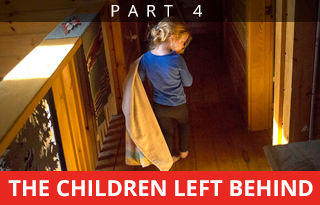
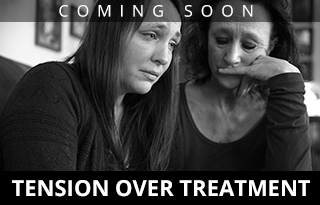
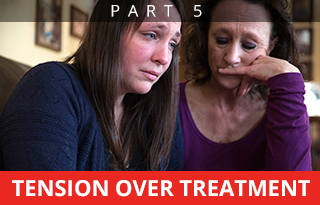
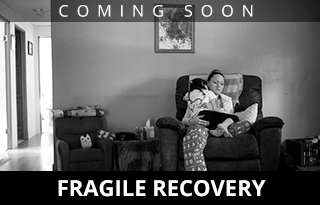
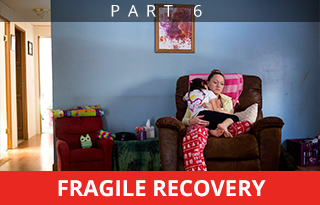

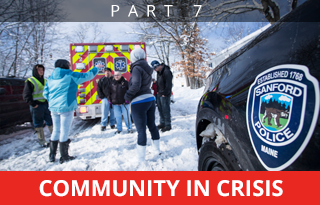




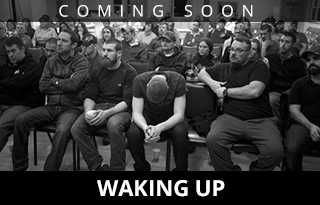
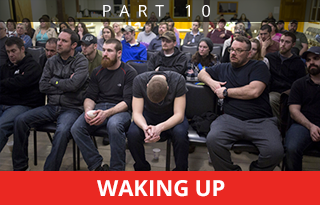


Success. Please wait for the page to reload. If the page does not reload within 5 seconds, please refresh the page.
Enter your email and password to access comments.
Hi, to comment on stories you must . This profile is in addition to your subscription and website login.
Already have a commenting profile? .
Invalid username/password.
Please check your email to confirm and complete your registration.
Only subscribers are eligible to post comments. Please subscribe or login first for digital access. Here’s why.
Use the form below to reset your password. When you've submitted your account email, we will send an email with a reset code.